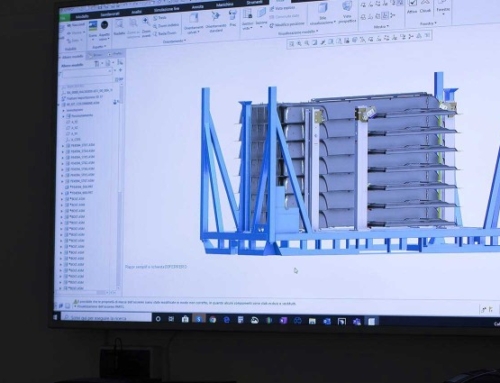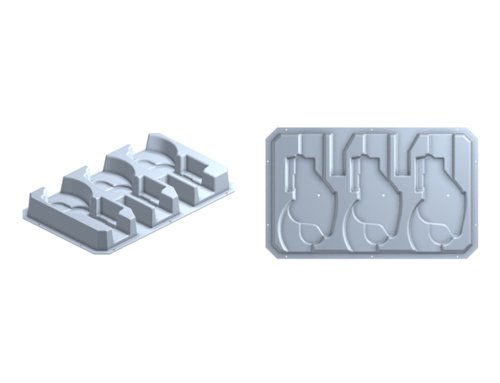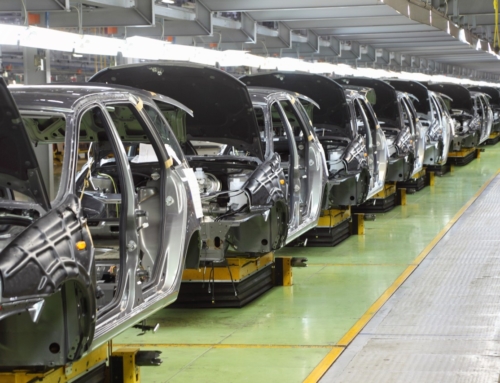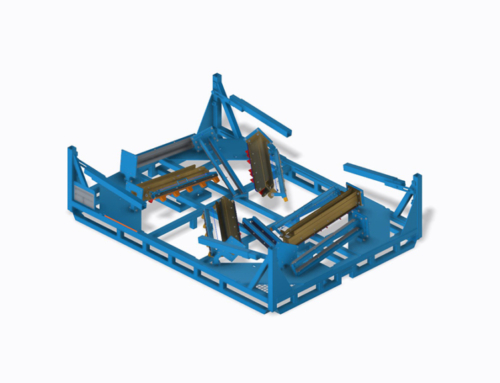Robotics and metal racks in the automotive industry
Automation and metal containers: a winning synergy for automotive production
In recent decades, the introduction of robotics in the automotive sector has represented a real revolution in the production paradigm. In automotive factories, robots now play a decisive role in every phase of production, from welding to painting, assembly and logistics. The increasing automation has allowed us to achieve levels of precision, speed and safety previously unimaginable, transforming the entire manufacturing process into a hyper-efficient and digitally integrated chain.
In this context, the use of metal containers in robotic lines in the automotive industry is also essential to ensure the efficiency and reliability of production flows. These containers are designed with high quality standards and a specific structure, designed to perfectly fit anthropomorphic robots, AGV (automatic guided vehicles) and automated storage systems. The versatility and efficiency of metal containers, combined with robotics, allows companies to significantly reduce downtime, improve the quality of finished products, optimize the supply chain and remain competitive in the era of Industry 4.0.
Let’s see in more detail how metal racks with stacker pillars can improve safety, precision and productivity in the handling of car components.
Automotive robotics and automation
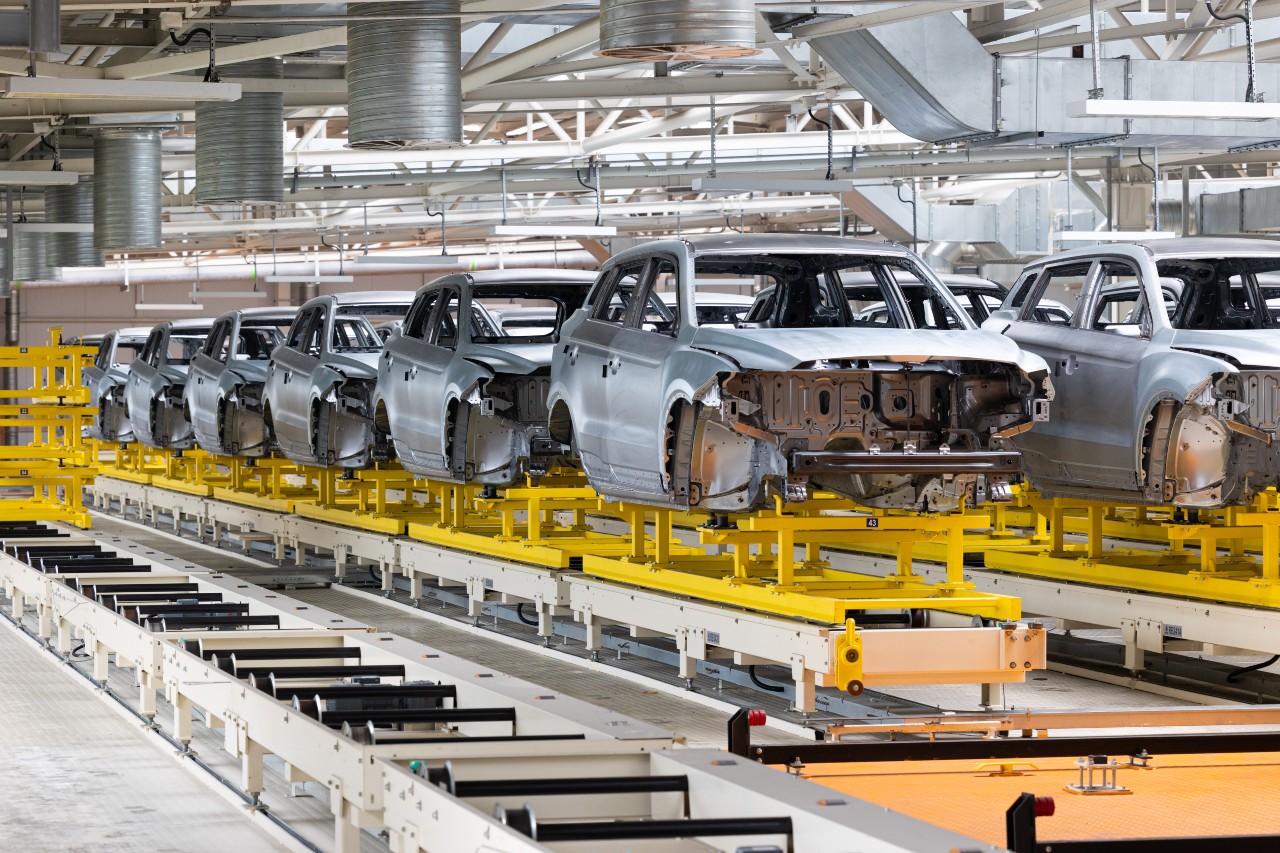
The automotive industry has been among the first to recognise the potential of automation and robotics technologies, adopting them on a large scale to optimise every step of the production process. Today, the world’s most advanced car manufacturers operate as “smart factories”, where every element is interconnected through digital systems, sensors and software. Common technologies include industrial robotic arms, autonomous mobile robots (AMR), automated guided vehicles (AGVs), artificial vision systems and above all cobots (collaborative robots), which together help to make car production faster, precise, safe and adaptable.
Industrial robotic arms are used in assembly lines for welding, painting and assembly. Ensure high processing speeds and repeatability, working 24 hours a day without interruption. In parallel, machine vision systems combined with artificial intelligence enable robots to “see” and “understand” their surroundings by performing real-time quality checks or adapting to slight variations in components.
The AMR and AGV, on the other hand, deal with the autonomous movement of materials, including metal containers, optimizing logistics flows and reducing the dependence on human labor in the most repetitive tasks.
But the real innovation of recent years is represented by cobots, or collaborative robots. Unlike traditional robots, which operate in isolated areas and require safety barriers, cobots can work side by side with human operators. Equipped with force sensors, vision and artificial intelligence, these robots can sense human presence, adapt to the pace of the operator and stop immediately in case of unexpected contact. This makes them ideal for tasks that require precision but also flexibility, such as screwing components, inserting cables or assembling complex parts. In addition, thanks to their simplified user interface, cobots can be programmed even by unskilled personnel, reducing setup time and costs.
In particular, where metal containers are used, cobots are often used for loading and unloading operations, organizing components within packaging or managing micro-activities that require high attention and precision. This robot-container synergy allows an automated, precise and safe internal logistics, reducing the risk of damage and speeding up the supply of lines.
Types of metal containers for the automotive sector
Metal containers for the automotive industry are designed to integrate with robotic lines and industrial automation systems, offering robust, functional and customized solutions for any type of component. Among the most widely used types are:
- metal racks with stacker pillars: equipped with internal vertical supports that divide the space and protect the pieces from shocks and damage. Ideal for large car components, they guarantee maximum stability and protection during transport and storage;
- custom-made racks for components: designed to accommodate pieces of specific shapes and sizes with internal compartments that optimize space and facilitate automated handling.
Metal racks with stacker pillars and their integration into robotized lines
Metal racks with stacker pillars are an advanced solution to optimize automated production lines. They are designed to interface with industrial robots and AGVs, fully automating loading and unloading operations.
The heart of these systems is represented by the automotive columns installed on the containers. Each houses mobile mechanisms (tilters) synchronized with the robot movements, allowing precise and safe movement of components of all shapes and sizes. These containers guarantee a continuous and controlled production flow, protecting each piece from mechanical stress and improving the safety and efficiency of the entire production process.
The advantages of metal racks with stacker pillars
The integration of column containers in robotized lines can guarantee concrete advantages for automotive companies, including:
- production efficiency: by automating loading and unloading, machine downtime is reduced and productivity is increased;
- increased safety: fewer manual interventions means less risk for operators and more stable handling even of bulky components;
- cost optimisation: the reduction of manpower and errors leads to significant savings on operations;
- precision: each component is positioned with extreme accuracy, ensuring uniformity and quality in the process.
Ferrero Automotive solutions in synergy with robotics

In an industrial landscape increasingly oriented towards automation, Ferrero Automotive stands out for the production of specific metal racks and highly specialized metal racks with stacker pillars, designed for the handling and storage of car components in robotic lines in the automotive industry.
Metal racks with stacker pillars, in particular, are designed to work in synergy with robots, fully automating loading and unloading operations. The system of movable flaps, integrated inside the columns, ensures stability and protection to the components during each phase of the movement, reducing to a minimum the margin of error. Each solution is the result of a careful and detailed design, starting from the technical analysis of the 3D models provided by the customer.
Using advanced technologies and CAD software, our designers adapt each container to the specific needs of the line, performing feasibility analysis and virtual simulations to optimize layout, capacity and load flows. The highest accuracy is guaranteed by 7-axis 3D arm measuring systems, which ensure perfect tolerances and absolute compatibility with production robots.
If you want to find out how our metal containers can optimize your production, contact us! Our technicians are always available to help you design the best solution for your needs.



